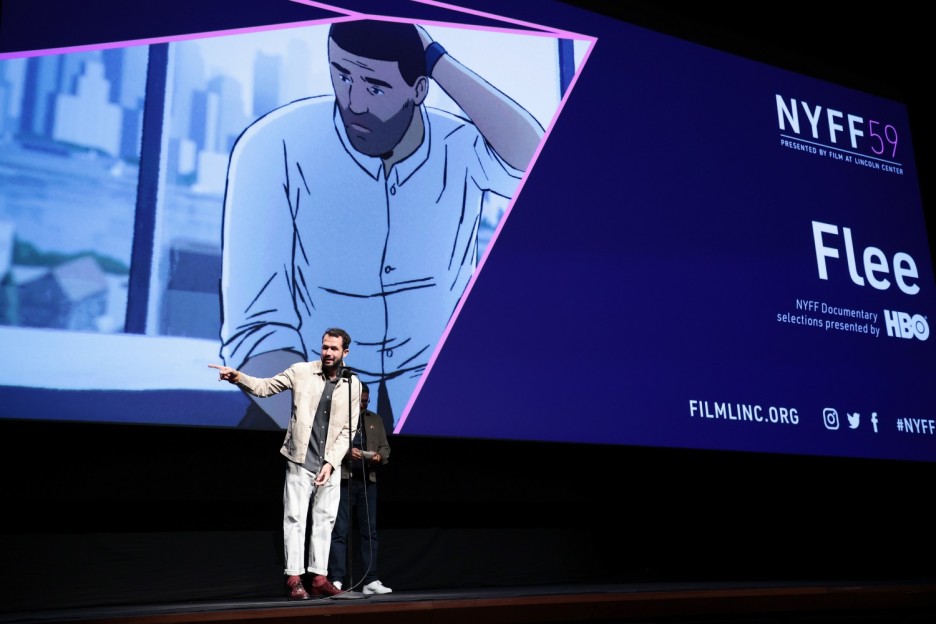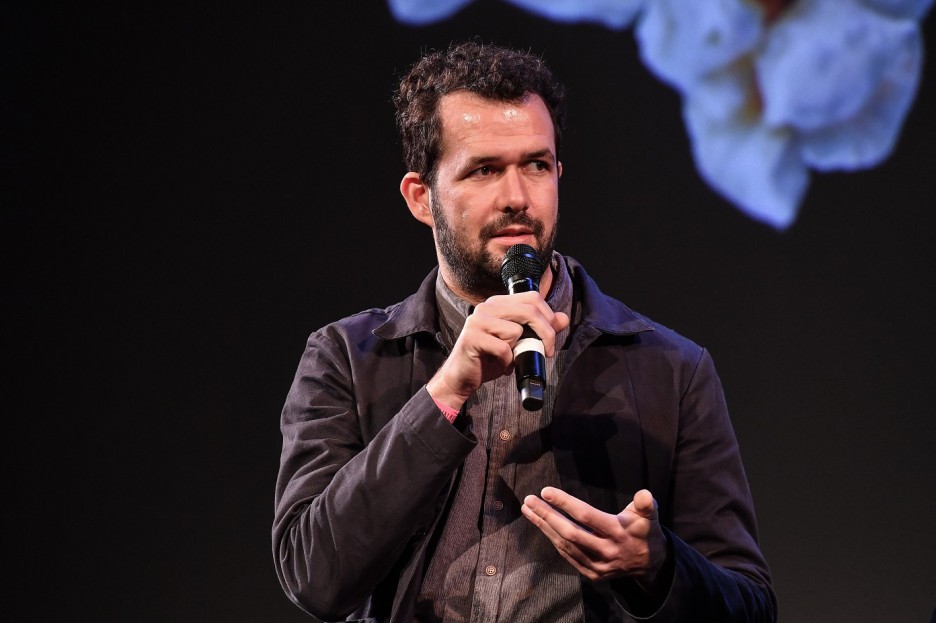Animated Documentary 'Flee' Is A Cathartic Masterwork Of Heartfelt Storytelling Which Begs To Be Experienced In Our Turbulent Times

When one ponders how to successfully convey the plight of refugees and the ongoing crisis for those seeking asylum around the world, animation might not be the first choice as a storytelling device. But often the most outside the box thinking proves to be the most effective. In the case of director Jonas Poher Rasmussen's documentary Flee, animation fills the role in the most superb way imaginable.

Flee tells the incredible true story of Amin, a Afghani man living in Denmark on the verge of getting married to the man he loves. Never facing his past, Amin is asked by his good friend, Rasmussen, to recall his harrowing past experiences as a child refugee; tales so painful, he couldn't even tell his fiancée.
The choice to use animation, mixed with some archival footage, works two fold for the narrative. Firstly, many names had to be changed to protect those who were affected in Amin's family. Second, the story's graphic nature is heightened without being overly gratuitous, giving the rough subject matter a sense of respectful levity when the moment calls for it. When asked at the Crosby Street Hotel Screening Room Q & A about what made him want to make this film, Rasmussen opened up about Amin, their friendship, and why animation what brought him to the choice of using animation as a storytelling device,
You know, in the beginning it was just, um, being very curious about my friend. I've known him for more than twenty years and I knew that he had this background that he didn't want to talk about and, um, we were very close so it felt weird that there was this part that he couldn't bring along with him. And then at some point we were talking and he said that he felt this need to finally open up and share this story. So, when I had the chance and I was invited to this workshop in Denmark that is called Anidox, where they combine animators and documentary filmmakers to develop ideas for animated documentaries and they asked me if I had an idea and I talked to Amir about if this was maybe a way to tell his story and he said yes, and that the fact that we were using animation and we could keep him anonymous would really help him because, you know, what you see here is the very first time he shares his story and he didn't want to have that public eye on him. He didn't want to be victimized and he felt like if he could share the story and still keep control over when he wanted to talk about what happened that would be a good way to do it.
The film begins with a close up of an animated Amin as an adult settling in on a bed, staring nervously up into a camera that his director friend has set up to document his story. Amin takes a deep breath and closes his eyes, attempting to center himself. After a few bits of advice from his friend Jonas, Amin begins.
Amin's story starts in 1984 Afghanistan. The rhythmic beat of Ah-Ha's Take On Me sets the stage for his youthful self running through the busy streets of town, happily listening to a pink Walkman headset his sister gave him. A carefree, unfettered, child wearing one of his sister's old dresses, enjoying the freedom which comes with adolescence. Amin recalls his older sister talking about when their father took her up in a plane for the first time. His wide-eyed exuberance abounds as he listens. He introduces us to his mother, of whom he speaks of with a loving reverence, as he does with all of his siblings. Life was not perfect, but fondly remembered all the same.
The story continues, talking about how the new governing body would go door to door looking for those they suspected of opposing them. Police come to their house and take his father away, leaving only his watch and a few pictures to remember him by. This once happy child, now forced to go on without his father.
Throughout the film, Amin's present day life with his future husband is documented and retold through animation, inter-cutting to the present day when the story of his past grows too overwhelming for him to continue. Theirs is a simple, content life full of discussion of house hunting and Amin completing his postdoc. Far from the trauma he has yet to unburden to the love of his life and the world.
What follows is the most harrowing account of what it is to be a refugee, both as a child, as a woman in the case of Amin's sisters and mother, and the struggle of a young man who is forced to eventually travel alone to a new country while having to put his trust in human traffickers who are more about the money than the humanity of their actions.
Freedom from oppression is the main through-line of the piece, not only in the physical sense of leaving one's homeland, but for Amin as a gay youth in a religion which condemns such lifestyles. His sexuality is touched upon and ever present. Little moments like where he speaks about his crush on Jean-Claude Van Damme is an especially sweet foray into his burgeoning feelings, though they don't truly come full circle until the end involving his oldest brother. This is one of the most emotionally beautiful moments of cinema you will see all year and begs to be experienced by all. This moment works as a capper to the journey of Amin, giving the audience a sigh of relief after the trauma you share going through an examined life.
To say that I loved this film would be an understatement. There is not one frame where a range of emotions isn't evoked from the audience who end up hanging on Amin's every word. What starts as a man making sense of his friend's life, develops into a cathartic, riveting tale which envelopes the viewer as much as it does the person telling it. Flee is a must see film that sheds light on so many vital issues facing humanity today.






